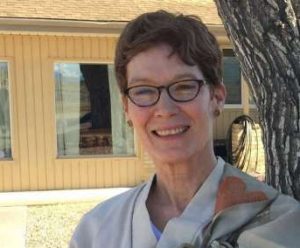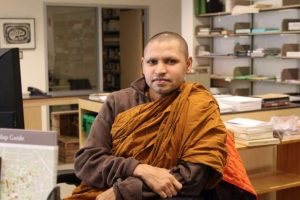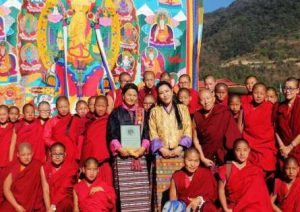I used to think that if there is such a thing as a next life, and I could choose to be reborn as a woman or a man, I would choose to be a man. Partly out of curiosity, and because it would make a change from my current situation. Mostly because I feel that somehow life is easier, and better for men.
Ancient Buddhist texts seem to agree with me on that one, and they offer countless advice on how to avoid being reborn as a woman. Amitabha even promises that any woman who manages to be reborn in the Pure Land will do so as a man. Now that’s a truly Pure Land, not a woman in sight!
Of course, back then, the people who were learning and teaching about Buddhism were all men, and maybe they felt sorry for women. After all, Ancient India was a male dominated society and there was little room for women to flourish intellectually and, sadly, even spiritually. Being reborn as a man would have made such things a lot easier, so the advice makes a little bit of sense.
Fast forward to modern times, and let’s follow the life of Rita Gross, who was born in rural America. Growing up in a very strict and patriarchal Lutheran context, she wished that she had been born a man so that she could do more interesting things with her life. As it was, it seemed that there were little options available to her other than getting married, having a family and doing housework.
One day, Rita saw a picture of angels, and realized that the angels were women. This changed something in her, for now she knew that wisdom could also appear in a female form. Years later she used this insight to counter her teacher’s claims that, because God and Jesus are male, women are inferior and must submit to men. As it happens, though, she was told that she had made a mistake, for which she was immediately corrected. You see, apparently it is widely known that angels are not correctly represented: although they look like women, they are actually men, too.
Thankfully, little Rita was not to be so easily discouraged. The words of her teacher did not weaken the insight that came from within, telling her that the problem lay not in being a girl, but in the system. Most of Rita’s life has since been spent studying, writing and teaching about women and religion. And ignoring claims that, since the feminine is included in the study of the masculine, learning about women is useless.
Now, Rita’s path has been a difficult one, and luckily she came across some mentors and teachers who helped along the way. At a time when most women were encouraged to stop studying, she was supported by a female professor to continue her academic career. This is support which, so far, she had not found in her male teachers. After all, general consensus was that, as a woman, her main and sole duty was to procreate, not be an independent thinker. With an understanding female mentor to encourage her, she continued along her path.
A little later, though, precious help did come to her in male form. Rita had been researching women’s relationship with religion and ritual, but she did not think that this was important enough to write her PhD on. Clearly this was the same voice speaking as that of little Rita, who so many years ago had wished that she had been born a man to enjoy a more interesting life. Luckily, her male professor explained that as a woman, she was able to appreciate and record data that men could not. This was an invaluable opportunity – not just for Rita – but for the whole of religious academia.
Despite this support, Rita felt very angry towards the world and its patriarchal mind-set. Luckily, she came across a religion that could help her to skillfully take care of that anger: Buddhism. Although she learned a lot from all the Buddhist texts she read, her knowledge of the religion flourished thanks to the guidance of Jetsun Khandro Rinpoche, a female Tibetan lama. Khandro Rinpoche understood Rita and her work like no one else.
The female Rinpoche taught Rita and her other disciples that anger is a waste of time, and that it should be tamed. But she was very clear that this did not mean abandoning critical thinking. This advice was invaluable to Rita, who is an accomplished author of many books about women and religion: “Feminism and Religion”, “Unspoken Worlds: Women’s Religious Lives”, and “A Garland of Feminist Reflection: Forty Years of Religious Exploration”. And she has also looked deeply into gender issues within the realm of Buddhism: “Buddhism after Patriarchy: A Feminist History, Analysis, and Reconstruction of Buddhism.”
So Rita chose the middle path of Buddhism, and in doing this, she has learned to address gender topics in a non-attached, yet deeply involved and compassionate way. As a talented author and teacher, she shares with others the wisdom from her journey and experiences. This is a gift that, had Rita not been born a woman, would not be available to us today.














